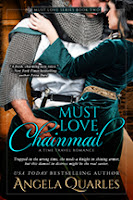Part of the Indie Author Series
Hello, welcome to the next installment of my Organized Writer series. Today, I'm sharing with you how I've created a literal writer's toolbox. So many times when we read great craft books or posts, they say to metaphorically put such and such in your writer's toolbox. But what if you created a literal one that could organize all the stuff you learn for quick access wherever you happen to be? I used to print out great posts and file them in a filing cabinet, or just bookmark them in my browser. Around 2012, though, I started organizing it online. At that time, I used Scrivener, but quickly stopped, since it was cumbersome to access and wasn't mobile.
If you read my post from last month on Making A Marketing and Production Bible, I'm sure you won't find it hard to believe that I turned to OneNote, but you could also use Evernote or another similar program.
How Do I Have It Set Up?
I created a new notebook called Writing Tools, but you can make this anything you want, obviously. Under that, I created tabs for each main topic. Currently, my topics are: Power Words, Style Guides, Rhetorical Devices, Crutches, Misc Tips, Revising, Inspiration, Emotion, and, since this is a kid friendly blog, let's just say the last tab is called Writing Romance.
Under each of these, I create as many Pages and Subpages as I need and make sense. Here's a screenshot showing the Power Words tab:

In this tab, I collect great words, especially ones that can be used to replace mundane ones like "walked" or "ran." I also alphabetize them so that if I'm also going for alliteration or for some reason need a word starting with a certain letter, it's easier to find. You might wonder what those frowny faces are! I hovered over one in the picture, which says "Fear," but you can see up in the Toolbar ribbon a mini scrollbox with other sad and happy faces and an emotion. At one time a couple of years ago, I got super organized and replaced most of the tags in OneNote with emotions so that I could tag the power words. That way, if I was looking for words to help evoke Fear, for instance, I could just search the tag. I've since let that lapse, and if I remember right, I ran out of tags. Anyway, I'm including it in case it gives you ideas for how else to use OneNote's features.
What To Include and How
I like to input any nuggets of wisdom I've learned in an online class. Granted, I usually have the class handouts saved on my computer, but this way I can pull out the relevant bits into the areas they go with. I make sure to leave a note on where it came from so I can either credit it, if I'm teaching a class or writing a post, or can access the main file where it came from to (re)learn more. Here's where you can also type in notes during an in-person class or workshop if you have your laptop or tablet with you.
Many reading apps and devices now have Share buttons too, so I highlight a section from a craft book and send it to OneNote; I save bits that illustrate the topic I'm trying to imbibe. I also save bits that show the pros and cons of the topic, with links to folks who recommend and to those who don’t.
Under Rhetorical Devices, I have each device listed as a separate page, and on each page I list what it means and how best to use them. On some of them, I've collected good examples I've come across (or I put in my own).
Misc Tips collects random advice that I found helpful, but also has my tips on showing vs. telling.
Why Create One
Basically, this is my brain dump for craft advice, either to bolster areas I'm weak on and need to get pounded into my head, or as references when I'm writing a post or teaching a class. I say this, because your weaknesses may differ from mine and so yours would be tailored a bit differently to your needs.
For instance, I can quickly access this toolbox when I’m trying to remember exactly why a certain concept would make my scene stronger, or when I critique/Beta read fellow writers. I used to fumble around searching my emails for an example of something, or consult my internet bookmarks, or thumb through a craft book, etc. to provide an example of what I’m suggesting/explaining. Now I have these at my fingertips! For some common ones, I have the comment I usually make about that craft issue already written with a link to a blog post or two that gives more information. (Many of them are to Janice Hardy's excellent craft posts, actually!) So I just click over to that bit, copy and paste, and customize if need be. Here's an example of one:
On the left side (which is out of the frame), I've saved helpful blog posts about the topic, and on the right is my pre-written comment.
You'll see I also have subpages called "Fixes" and recently I've started copying my Before and Afters when I'm revising my own work so I can use them as illustrations for a blog post or class.
I also find it extremely helpful as I fine tune my (limited) pre-plotting as well as my revision process. Under there, I have documented what steps I like to do and at which stage. The process takes into account any weaknesses in my writing I'm aware of, so that when I'm going through the process I can tackle them. I'll have that tab open in my tablet as I sit at Starbucks, red pen and highlighters in hand, and self-edit before I send it off to my line editor.
And that's it--my literal writer's toolbox! Take it and run with it :)
Do you have a writer's toolbox? If so, how do you organize yours? Do you use a different program? Also, let me know if you'd like me to cover a specific topic in my Organized Writer series.
 Angela Quarles is a USA Today bestselling author of time travel and steampunk romance. Her debut novel Must Love Breeches swept many unpublished romance contests, including the Grand Prize winner of Windy City's Four Seasons contest in 2012. Her steampunk, Steam Me Up, Rawley, was named Best Self-Published Romance of 2015 by Library Journal. Angela loves history, folklore, and family history. She decided to take this love of history and her active imagination and write stories of romance and adventure for others to enjoy. When not writing, she's either working at the local indie bookstore or enjoying the usual stuff like gardening, reading, hanging out, eating, drinking, chasing squirrels out of the walls, and creating the occasional knitted scarf.
Angela Quarles is a USA Today bestselling author of time travel and steampunk romance. Her debut novel Must Love Breeches swept many unpublished romance contests, including the Grand Prize winner of Windy City's Four Seasons contest in 2012. Her steampunk, Steam Me Up, Rawley, was named Best Self-Published Romance of 2015 by Library Journal. Angela loves history, folklore, and family history. She decided to take this love of history and her active imagination and write stories of romance and adventure for others to enjoy. When not writing, she's either working at the local indie bookstore or enjoying the usual stuff like gardening, reading, hanging out, eating, drinking, chasing squirrels out of the walls, and creating the occasional knitted scarf. Website | Facebook | Twitter | Goodreads | Amazon | Barnes & Noble | iTunes | Indie Bound
About Must Love Chainmail: A Time Travel Romance
 Trapped in the wrong time, she needs a knight in shining armor, but this damsel in distress might be the real savior.
Trapped in the wrong time, she needs a knight in shining armor, but this damsel in distress might be the real savior. A damsel in distress...
With a day planner attached to her hip, the last thing Katy Tolson wants is a romance that threatens her well-ordered life. She's set to marry the safe--but bland--guy, but something's not quite...right. A careless wish thrusts her through time into medieval Wales and into the arms of...
A knight in somewhat shining armor...
Sir Robert Beucol, half-Norman and half-Welsh, lives with the shame of his father's treason and vows to reclaim his family's holdings and thereby his honor. To prove himself to his king, he must be more Norman than a full-blooded Norman. What better way to show loyalty than to fight his mother's people? He has no desire to be sidetracked by the mysterious wench with pink toenails, peculiar habits, and passion smoldering behind her cool, collected exterior.
A rebellion that challenges both...
The Welsh uprising fits perfectly into Robert’s plans. Katy’s on the other hand? That’s a no. As they embark on a perilous journey through the heart of Wales, each passionate encounter pulls them closer together, but farther from their goals. When everything they value is at stake, can they save each other and their love?



I love OneNote. I use it for my marketing plans, and it actually makes doing marketing more fun. I have one File for marketing, and I can put the marketing for all my books in that. It makes it easier to see what I've done in the past and adjust my plans for future releases/promo.
ReplyDeleteHi Stina! I do the same thing for my Marketing! Did you see my post from last month? http://blog.janicehardy.com/2016/01/the-organized-writer-making-production.html
DeleteThanks for this post. Once upon a time i used One Note collaboratively, but ended up going to Keep and Share. I may try this again!
ReplyDeleteGood luck Carol! It's definitely a very helpful tool for many things!
DeleteThank you, this is a very helpful post. I have two large three-ring binders. One is "How to Write a Novel" and the other "How to Edit a Novel". Most of the materials in them exist as files on my computer. I am going to convert them to OneNote though I still like the idea of seeing them on paper. Thanks again.
ReplyDeleteThat's great you have them organized! I do like having them in OneNote though because then they're more portable. I've even checked or added to them from my phone.
DeleteGreat idea to use OneNote to organise advice on writing craft, I've used the program for personal organisation in the past but this would definitely make things a lot easier!
ReplyDeleteAwesome! Good luck!
DeleteThank you for this post. I'm glad to see that I'm not the only one who loves OneNote. I use it for everything from writing stuff to family recipes. I also keep everything thing on my portable external hard drive so I'm never without my information. Evernote is good but OneNote is better. Due to the fact that there are not restrictions on how much you can upload, cut and paste to OneNote.
ReplyDeleteI agree on Evernote, plus OneNote is nicer looking ;)
Delete"Do you have a writer's toolbox? If so, how do you organize yours?"
ReplyDeleteMostly notes. And memory.
But a toolbox on your lines is what Eramus had in mind when writing De Duplici Copia Rerum et Verborum.